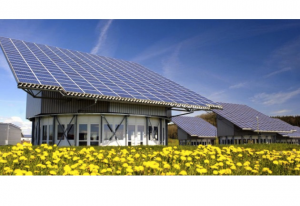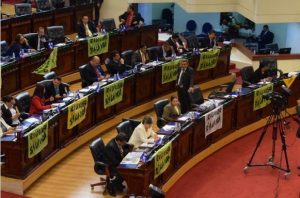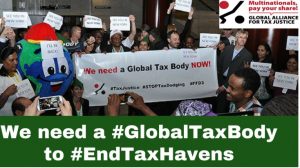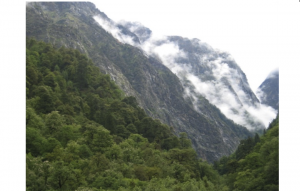FREE FLOW OF INFORMATION
A survey by CPNN
On the website, http://earthday.org, we find the following quotation: “Earth Day Network’s mission is to diversify, educate and activate the environmental movement worldwide. Growing out of the first Earth Day, Earth Day Network is the world’s largest recruiter to the environmental movement, working with more than 50,000 partners in nearly 195 countries to build environmental democracy. More than 1 billion people now participate in Earth Day activities each year, making it the largest civic observance in the world.”
Certainly this is a good cause, and one that is central to the culture of peace, since, as defined by the United Nations, sustainable development is one of the eight program areas of the culture of peace. But are the numbers correct? Where can we find a list of the “50,000 partners in nearly 195 countries”? And how can we verify the participation of “more than 1 billion people”?

We find 102 partners listed on one of the website’s pages. A few of them are networks, such as Sister Cities International or the National Wildlife Federation, but most of these partners are small organizations (for example, the Woods Hole Research Center) or government agencies, for example, the Maryland Transportation Authority or the California State Parks. None, as far as I can tell are organizations with large memberships.
Looking at the list of Earthday partners, we find many countries represented, although the vast majority are limited to the United States. If one counts the partners of Sister Cities International , there are already 145 since they have “2,000 partnerships in 145 countries around the globe.” There are a eight with names in non-English scripts, mostly Arabic or Chinese. And there are at least 13 partners from other countries including Vietnam, Australia, Guatemala, Guyana, India, (Agastya), Bahamas, Kosovo (Eco Viciana and Shoqata), Tanzania (Friends of Usambara), Italy (Dietro le fo’), UK (University of Leeds), UK and Canada (International Fund for Animal Welfare), Peru (Ecoan), and Malaysia (Rakan Segari).
We search in vain on the website of earthday.org for a listing of earthday observations around the world, although their claim of 1 billion participants is quoted by wikipedia and a other websites such as the The Guardian (UK).
With this in mind, we decided at CPNN to search the internet using google to find examples of the celebration of Earthday. What we found were celebrations mostly in North America, in all 50 states of the USA and most of the Canadian provinces. To a lesser extent, the “Dia de la tierra” or “Dia de la madre tierra” was celebrated in Latin America and the Caribbean. Articles about celebrations in the rest of the world were spotty, with a few in Europe and Asia and very few in Africa.
The largest number of celebrations in the rest of the world were the satellite marches for science, in solidarity with the march in Washington. On the website of Science Magazine, we find descriptions of the satellite marches in Seoul, Tokyo, London, Paris, Amsterdam, Barcelona, Tromsø and Svalbard in Norway, Bonn and Berlin in Germany, Melbourne, Sydney and Canberra in Australia, Aukland in New Zealand. According to Africa News, there were satellite marches in Nigeria’s capital Abuja, Ghana’s capital Accra, Kampala in Uganda, Blantyre in Malawi and Cape Town as well as Durban in South Africa among other cities. In the Philippines, there was a satellite march in Quezon City.
(Survey continued in right column)
Question for this article
What has happened this year (2017) for Earth Day?
(Survey continued from left column)
Ironically, given that the new administration in Washington is considered to be against ecological initiatives – for which the March for Science is a protest – the foreign embassies of the United States are one of the biggest sponsors of Earth Day events in the rest of the world. Hence, for example the article about Earth Day cleanup in Vietnam quotes the US ambassador and begins, “More than 1,000 volunteers from the US Embassy, associations, organisations and universities, joined hands to pick up garbage in Thong Nhat Park in Hanoi Saturday morning to mark Earth Day here.” In Fiji, “the Embassy of the United States hosted a clean-up campaign with Bank South Pacific (BSP) at the My Suva Picnic Park.” In China, “Earth Day Network is also partnering with the US Embassy in Beijing to host the Earth Day Expo at Beijing American Center.” In India, “As part of the Earth Day activities, the US embassy, in cooperation with programme partner Clean Air Asia, organised a two-day campaign “Better Air, Better Earth” to promote air quality awareness.”
Some other Earth Day sponsors were also surprising. In Malaysia, the Earth Day celebration was sponsored by the World Wildlife Federation based in the United States and the Soka Gakkai sect based in Japan. In Pakistan, the Earth Day celebration was sponsored by the Defence Housing Authority, an upscale real estate and property development organisation administered by the Pakistan Army which develops housing for current and retired military personnel. In Kenya, the earth day activities were sponsored by Chandaria Industries, makers of tissue and hyigiene products, and by Youth for Earth, an Australian-based NGO. According to the website tnf.org, “Tanzanians around the country celebrated Earth Day. Check out some of the great activities that took place: A Picnic, tree planting; and more.” But when we click on the links for the picnic, the tree planting and more, we get the US Nature Conservancy, US earthday and Jane Goodall’s website Roots and Shoots in the United States.
In Europe there were several Earth Day events that were local in nature. In Spain, The Provincial Delegation of Almería celebrated the ‘International Day of Mother Earth’ of 150 species of almucine in the environment of Laujar de Andarax, involving schoolchildren of the municipality. In France, the website Jour de la Terre, reported that there were at least 60 local events in that country. In Norway, there were events organized by the Center for Ecology-Based Economy. In the village of village of Ninotsminda in (Georgia) school №2, 9-10 held a lesson in the open air and celebrated “Earth Day” by cleaning the school grounds from the accumulated garbage. In Moscow, there were several events, including a festival in the “Pokrovskoe-Streshnevo” park. Also in Russia, there was a school celebrations in Rostov on the Don and Ryazan.
We found two Earth Day events in Asia that were local in nature. In Indonesia, SINTALARAS, an outdoor club from Makassar State University, rallied-up together to clean a large amount of wastes at Mount Bulusaraung in commemorating Earth Day. And in Kuo Tao, an island resort in Thailand, “As well as an island wide land clean-up in the morning, an island wide underwater clean-up in the afternoon and an evening of fairground-style games, food & drinks and a raffle with huge prizes, the local government will be launching their Shark & Turtle Sanctuary Project for Shark Bay/Rocky Bay and a Giant Clam Project in Sai Nuan.”
We found one Earth Day event in Africa that was local in nature. In Ghana, “The Ghana Youth Climate Coalition in partnership with Ghana Youth Environment movement and zoom lion- Ghana embarked on a cleanup exercise and sanitation education.”
Is the Earth Day initiative gaining in scope? According to the Earth Day Network website, it has grown from 200 million people in 141 countries in 1990 to 1 billion people in 195 countries this year. But judging from the survey results above, we have to be skeptical of these numbers. It’s a good initiative, and we’d like to see it grow, but wishful thinking is not enough!









